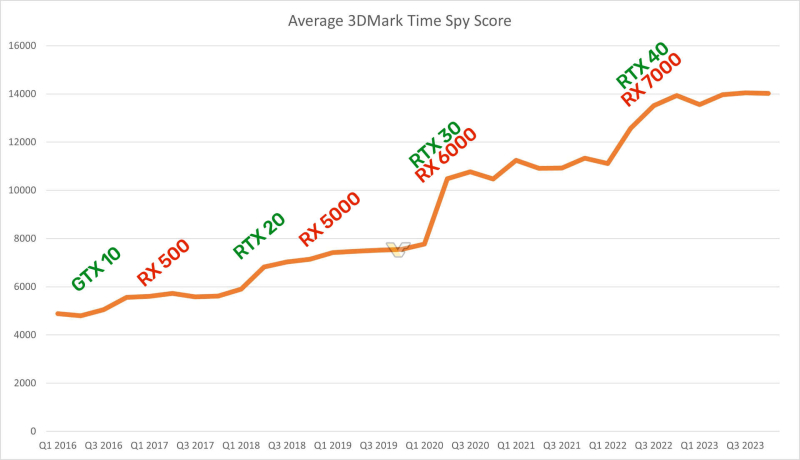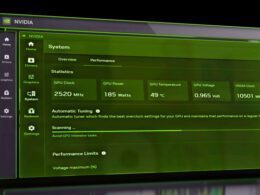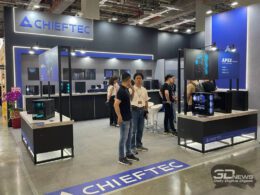Yesterday, UL, the company behind the 3DMark benchmark, released a new, free graphic test, Steel Nomad. The successor to Time Spy, a popular test designed to evaluate video card performance without ray tracing, Steel Nomad is already garnering attention. Since Time Spy’s launch in 2016, it has amassed 48 million performance test results, capturing critical data about the graphics processing power over time.
Using these 48 million test results as a foundation, the Time Spy Development Team designed a graph that illustrates the evolution of graphics processing power since 2016. As per the graph, the performance of video cards has potentially increased by 2.8 times. The announcement by 3DMark somehow contradicts this data, asserting a fourfold increase.

Like its predecessor, the new Steel Nomad test evaluates GPU performance, circumventing ray tracing technologies. Though Time Spy supports the modern graphic API DirectX 12 (becoming the first UL benchmark to do so), it does not take advantage of new DX12 Ultimate features like mesh shaders, variable rate shading, or Sampler Feedback, the latter allowing for more efficient texture processing and shading by recording data about texture samples and their placement.
The Time Spy performance growth chart highlights sharp increases in video card performance in 2020 and 2022, following the release of new video card architectures from Nvidia and AMD. A subsequent slight decline and eventual stabilization may be attributed to the high cost of recent generation video cards and Time Spy’s diminishing popularity.





